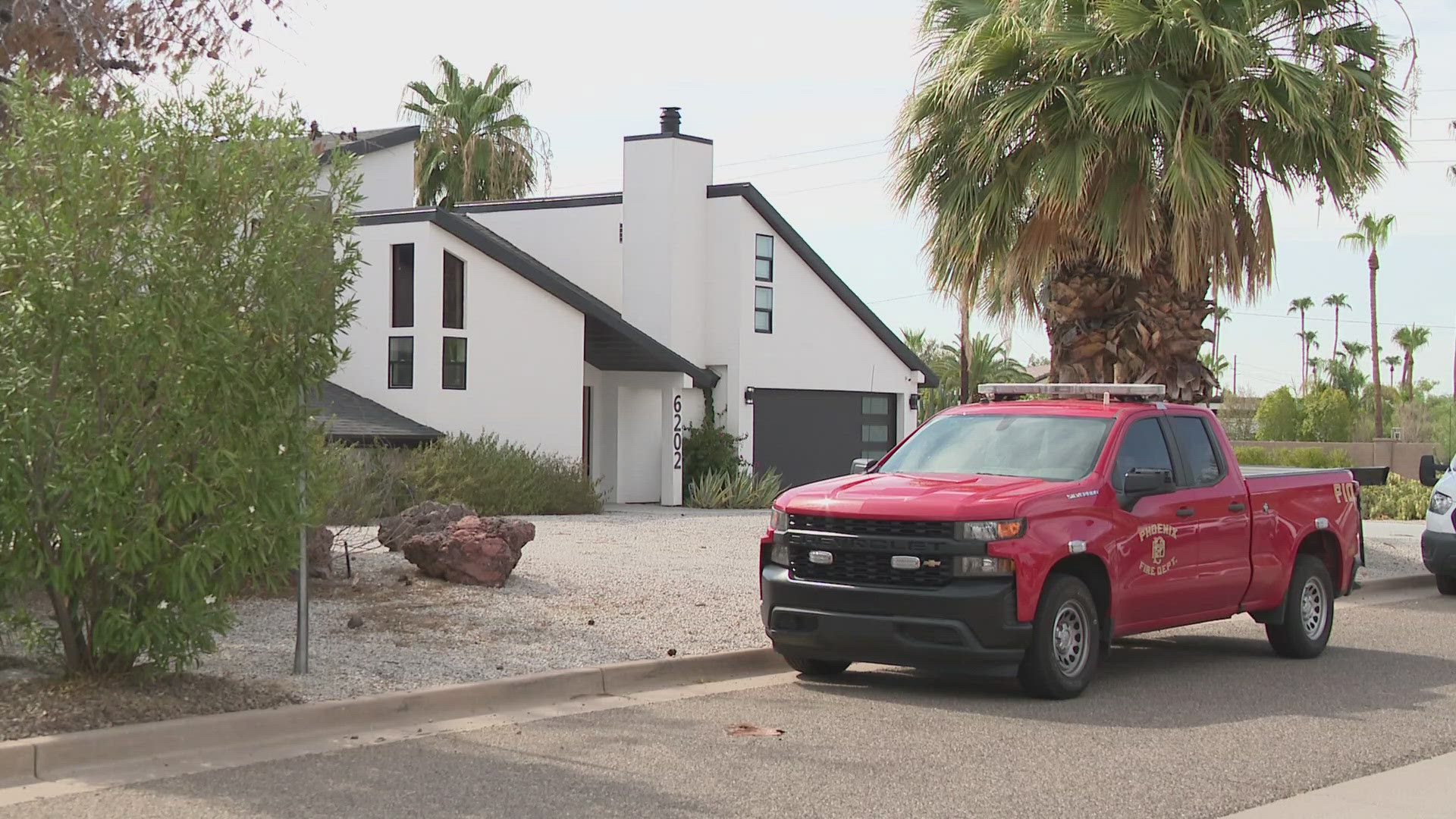PHOENIX — Another toddler lost their life in a Valley swimming pool Tuesday.
"They were from out of town," Phoenix Fire Department Captain, Todd Keller said. "Prior to crews on scene CPR was initiated. We did take over advanced resuscitation efforts. We took the child to a nearby hospital and I can tell you the child has been pronounced deceased."
Phoenix police took over the investigation Tuesday. For most of the day, officers were seen going in and out of the property.
"We don't know how long the child was in the water," Keller said. "I can tell you there was not a pool fence around this pool."
18 deaths of children under 17 have been reported in Maricopa County in 2024, according to the Children's Safety Zone.
"Here in Arizona we see far too many drownings, we're double the national rate, unfortunately," Bianca Cardiel said.
Cardiel is an Injury Prevention Specialist at Phoenix Children's Hospital. She says drowning is the leading cause of death for 1 to 4-year-olds. The CDC also states it's the second leading cause for children 5 to 14 years old.
"Well, I believe it's developmental expectations," she said. "All they want is to be children, right? Expect them to climb over things and go through the doggy door for them to get to water."
Pool fences, recurring swim lessons, door alarms and locks can all help save lives. However, Cardiel stresses the importance of adult supervision. She said according to the latest findings from the Arizona Child Fatality Report from 2022, 97% of drownings in Arizona were because there wasn't any supervision.
"Supervision is not sitting on the deck while the child is in the pool," she said. "They have to sit at arm's reach."
Officials remind people about the ABCs of Water Safety. Jaci Lambert with Aqua-Tots says implementing all three steps can help make water safety achievable. Lambert sent 12News more information on what those steps are:
- Adult Supervision – Adults are ALWAYS the first line of defense in the water. Parents should remain within arm’s reach of non-swimmers and always keep a close eye on independent swimmers. Drowning is silent, so it’s vital to know where small children are, especially when water is nearby.
- Barriers - Ensure backyard pools are harder to access by installing weighted doors, alarms, locks, fences, and gates. Many drownings occur during non-swimming times when a child has accessed water without supervision. In addition, always put away pool toys to prevent curious tots from reaching into the pool. This is a very common way in which children fall into the water.
- Classes - Keep children enrolled in a consistent, year-round swim program until they are considered safe and confident swimmers. This is how water safety skills will become second nature, teaching children how to find air, roll to the back, and get to safety. According to the National Institutes of Health, participation in formal swim lessons can reduce the risk of drowning by 88% among children ages 1-4 years old."
Officials as well as parents who've lost a loved one to drowning have told 12News they'd like to see more done to promote water safety. Cardiel agrees.
"Water safety should be talked about just as much as developmental milestones, especially here in Arizona," she said. "If we can get everyone on the team every community professional talking about it, evidence-based info on water safety, I think we can make a difference."
Drowning Prevention Tips
Drowning is the leading cause of death for children between ages 1-4 aside from birth defects, according to the Centers for Disease Control and Prevention. Three children die every day as a result of drowning. Here are some tips from the CDC on how to protect children around water:
Learn life-saving skills.
Everyone should know the basics of swimming (floating, moving through the water) and CPR.
Fence it off.
Install a four–sided isolation fence, with self–closing and self–latching gates, around backyard swimming pools. This can help keep children away from the area when they aren’t supposed to be swimming. Pool fences should be completely separate the house and play area from the pool.
Life jackets are a must.
Make sure kids wear life jackets in and around natural bodies of water, such as lakes or the ocean, even if they know how to swim. Life jackets can be used in and around pools for weaker swimmers too.
Keep a close watch
When kids are in or near water (including bathtubs), closely supervise them at all times. Because drowning happens quickly and quietly, adults watching kids in or near water should avoid distracting activities like reading books, talking on the phone, or using alcohol and drugs.
Up to Speed
Catch up on the latest news and stories on the 12News YouTube channel. Subscribe today.

